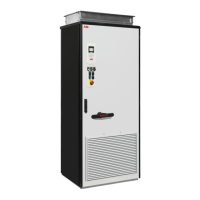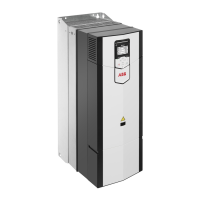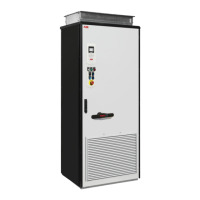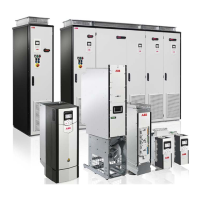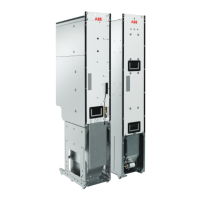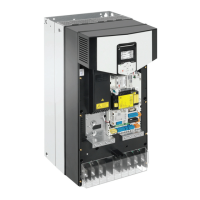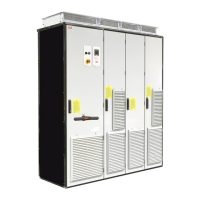3. The actual motor speed reaches the SLS1 limit positive. The drive limits the motor speed
reference so that the motor speed stays below the SLS1 limit positive. The FSO module
monitors the actual motor speed. If the motor speed goes above the SLS1 trip limit
positive (C), the FSO module activates the SSE function (see section SLS with speed
below the monitored speed (page 18)).
(3b) The motor speed goes below the zero speed limit (D). If the motor speed did not
follow the ramp at 2b, the STO acknowledgement is now permitted. The user must reset
the drive if the STO indication parameter (FSOGEN.62 or 31.22) is set so that a fault is
generated.
4. The user or a PLC energizes the applicable digital inputs of the FSO module. This
deactivates the SLS request. The FSO module acknowledges the SLS function
automatically. This is set to be automatic by an FSO parameter (SLSx.02), and no external
acknowledgement input is used. The FSO module stops SLS monitoring and de-energizes
the digital output that indicates the SLS status. The drive returns to normal operation and
starts to follow its ordinary speed reference. The drive accelerates the motor to the desired
speed along its acceleration ramp (drive parameter).
5. Normal operation continues.
SLS reaction when modulation is lost during deceleration ramp
This section describes the functionality of the FSO module when drive modulation is lost
during the SLS deceleration ramp and safe speed estimate is used. Safe speed estimate
is used only when there is an encoder failure and parameter S_ENCGEN.11 is set to Est
switch not active load. For functionality with encoder feedback, see section Drive modulation
loss when encoder feedback is used (page 30).
If the SLS function is activated when motor speed is above the SLS trip limit, FSO causes
the drive to decelerate to the SLS limit. The user can select how the FSO reacts if the drive
stops modulating during this deceleration ramp. The following table lists the possible values
of parameter SLSx.05.
FSO reaction if drive modulation is lost during SLS deceleration rampValue of parameter SLSx.05
SLS ramp modoff reaction
STO is activated after the delay defined by parameter SLSx.06. If modulation
returns before SLSx.06 delay has elapsed, monitoring and deceleration to-
wards SLS monitoring limit starts again.
Modoff delay time
See Example 1: Modoff delay time – modulation returns before modoff
delay (page 24).
SLS ramp or time monitoring remains on. The monitoring limit hits are gener-
ated based on the last valid speed estimate.
Monitoring active
See Example 2: SAR1 ramp monitoring active (page 25) and Example 4:
Time monitoring active (page 27).
Modoff delay time and Monitoring active are used: FSO generates the monit-
oring limit hit based on which condition is met first and activates the STO.
Monitoring active and modoff
delay time
See Example 3: SAR1 ramp monitoring and SLS modoff delay time act-
ive (page 26).
Monitoring is stopped and SLS indication is given after STO.14 delay. If
modulation returns during deceleration ramp, monitoring and deceleration
towards SLS monitoring limit start again.
Monitoring and modoff delay
time disabled
Note: No tripping fault is given due to loss of drive modulation.
See Example 5: Monitoring and modoff delay time disabled (page 28).
Option description 23
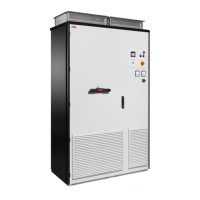
